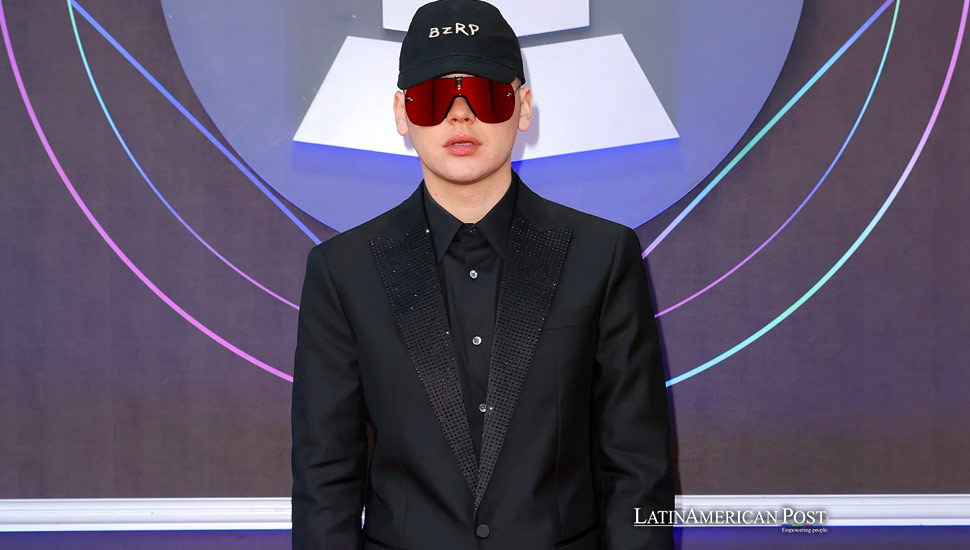The Rise and Cultural Impact of Reggaeton in Latin America

The Spanish television platform Movistar Plus+ premieres a new documentary exploring reggaeton’s success and cultural impact. Through three episodes, the documentary seeks to break down misconceptions and uncover the genre’s deep-rooted influence beyond prejudices.
The Spanish television platform Movistar Plus+ is set to premiere a new documentary on Monday. The documentary will focus on reggaeton, the latest major genre to emerge in the global music scene. It aims to reveal the reasons behind its success, dispel myths, and offer a deeper understanding of its cultural significance.
Across three episodes, directors Elena Pascual and José María Clemente bring together iconic figures such as American artist Justin Quiles, Spanish stars Omar Montes and La Mala Rodríguez, and Panamanian singer Lorna, famous for her hit ‘Papi Chulo.’ These artists, promoters, record label executives, journalists, and anthropologists provide their perspectives on the genre’s evolution and its impact.
The documentary traces reggaeton’s roots back to the influence of Jamaican dancehall, brought to Panama by Caribbean workers during the construction of the Panama Canal. This music was “Latinized” and eventually reached Puerto Rico, where reggaeton was coined during reggae marathons on the island. This journey highlights the genre’s complex lineage and fusion of various cultural influences.
One of the documentary’s primary goals is to clarify what reggaeton is and is not based on the fundamental rhythmic pattern known as “dem bow.” This distinction helps differentiate reggaeton from other Latin urban music styles. For instance, while Rozalén’s ‘Girasoles’ might feature elements that nod to reggaeton, global hits like Bizarrap and Shakira’s ‘Bzrp Music Sessions, vol. 53’ do not fit the genre’s criteria.
This exploration maps out reggaeton’s geographical and historical journey. It delves into its musical structure, offering viewers a comprehensive understanding of what defines reggaeton and sets it apart from other genres.
Breaking Gender Barriers in Reggaeton
The second episode, titled ‘Motomamis,’ focuses on the role of women in reggaeton. Initially, the genre was dominated by male artists and often criticized for its sexist lyrics. These lyrics were a reflection of a broader Latin culture that historically upheld male dominance, a legacy linked by some scholars to colonialism and the exploitation of women by colonizers.
However, the landscape of reggaeton has shifted dramatically. The documentary showcases a new wave of strong female artists like Rosalía, Karol G, Becky G, and the Spanish duo K-Narias. These women not only use reggaeton as a means of empowerment but also center their own pleasure and experiences in their music. This evolution marks a significant departure from the genre’s early days, presenting a more inclusive and empowering image of reggaeton.
Singer Zahara highlights that even revered figures in music, such as John Lennon, have produced problematic lyrics, suggesting that reggaeton’s alleged masculinity is just one of many stigmas the genre has had to overcome. This documentary segment provides a powerful commentary on the genre’s growth and the shifting dynamics within the music industry, especially regarding gender representation and empowerment.
Reggaeton and Social Class in Latin America
The documentary also tackles the social prejudices associated with reggaeton, particularly in Spain. Journalist Victor Lenore points out that many people feel uncomfortable enjoying the same music as Ecuadorian delivery workers or domestic helpers. This discomfort is partly rooted in a colonial mindset, where the colonizers are expected to extract value rather than learn from the colonized.
Spanish artist Juan Magán, a pioneer of electroplating, recalls being criticized for making “Panchito music,” a derogatory term. He reflects on how these prejudices have diminished over time, allowing for greater acceptance of reggaeton. Even Rodrigo Cuevas, a National Music Award winner in Spain, admits to enjoying reggaeton occasionally, recognizing it as the latest significant genre in the world.
Melani Parejo, Spotify’s Director of Music for Southern and Eastern Europe, emphasizes that reggaeton represents a paradigm shift. It is not merely a trend but a historical reality. This sentiment is underscored by Bad Bunny being the most streamed artist globally from 2020 to 2022, singing entirely in Spanish. This global recognition highlights reggaeton’s far-reaching influence and role in shaping contemporary music culture.
Reggaeton’s Cultural Significance
The Movistar Plus+ documentary comprehensively explores reggaeton, tracing its origins, evolution, and cultural impact. By dispelling misconceptions and highlighting the genre’s significance, the documentary provides a nuanced perspective on reggaeton’s role in contemporary music.
Reggaeton’s journey from the streets of Puerto Rico to the global stage is a testament to its universal appeal and cultural resonance. The genre’s ability to adapt and evolve while staying true to its roots makes it a powerful force in the music industry. As reggaeton continues to grow and influence new generations of artists and listeners, it is a defining genre of our era.
Also read: Puerto Rican Stars Brytiago, Jay Wheeler, and iZaak Release Reggaeton ‘Aura’
The documentary celebrates reggaeton’s success and challenges viewers to reconsider their preconceptions and appreciate the genre’s rich cultural tapestry. By acknowledging the contributions of both male and female artists and addressing the social dynamics at play, the documentary paints a holistic picture of reggaeton’s impact on Latin American culture and beyond.





